Aerosoft Approaching Quito Benutzerhandbuch
- Typ
- Benutzerhandbuch

Add-on for Microsoft
Flight Simulator
and FS2004!
DOWNLOAD
Add-on for Microsoft
Flight Simulator
Approaching
Quito
and Prepar3D v3
historic procedures!

Approaching Quito – Historic Procedures
Aerosoft GmbH 2016
2 3
Developers: A-Flight
Copyright: © 2016/ Aerosoft GmbH
Flughafen Paderborn/Lippstadt
D-33142 Bueren, Germany
Tel: +49 (0) 29 55 / 76 03-10
Fax: +49 (0) 29 55 / 76 03-33
Internet: www.aerosoft.de
www.aerosoft.com
All trademarks and brand names are trademarks or registered of their
respective owners. All rights reserved. /
Alle Warenzeichen und Marken-
namen sind Warenzeichen oder eingetragene Warenzeichen ihrer jeweiligen
Eigentümer.
Alle Urheber- und Leistungsschutzrechte vorbehalten
.
Approaching
Quito
Historic Procedures
Erweiterung zum /
Add-on for
Microsoft Flight Simulator X,
FSX:SE, Prepar3D V3
Handbuch
Manual

Approaching Quito – Historic Procedures
Aerosoft GmbH 2016
4 5
Inhalt
Systemvoraussetzungen ..................................................... 5
Installation ........................................................................... 5
Deinstallation von Approaching Quito .............................. 6
Allgemeine Informationen .................................................. 6
Features der Szenerie .......................................................... 7
Konfigurationstool .............................................................. 8
Besondere Hinweise ............................................................ 8
Urheberrechte ...................................................................... 9
Content
System requirements ......................................................... 10
Installation ......................................................................... 10
Removing Approaching Quito ............................................ 11
General information .......................................................... 11
Scenery Features ................................................................ 12
Config Tool ......................................................................... 12
Special information ........................................................... 13
Copyrights .......................................................................... 14
Systemvoraussetzungen
Um die Szenerie „Approaching Quito“ möglichst störungsfrei fliegen
zu können, benötigen Sie:
• Microsoft Flight Simulator X mit Service Pack 2 oder Accele-
ration oder Microsoft Flight Simulator X Steam Edition oder
Lockheed Martin Prepar3D V3
• Dual Core-Prozessor mit 3 GHz
• ca. 300 MB freien Speicherplatz auf der Festplatte
• 4 GB Arbeitsspeicher (8 GB empfohlen)
• 3D-Grafikkarte mit 1GB
Installation
Bevor Sie die Installation von „Approaching Quito“ starten, müssen
Sie als Administrator angemeldet sein und sicherstellen, dass FSX
geschlossen ist.
Sollten Sie die Box-Version installieren, legen Sie die DVD „Approaching
Quito“ in Ihr DVD-Laufwerk. Der Installationsassistent startet
automatisch. Sollte dies nicht der Fall sein, öffnen Sie den Explorer,
wählen Sie das DVD-Laufwerk und klicken Sie doppelt auf „Install
Approaching Quito.exe“.
Befolgen Sie die Anweisungen auf Ihrem Bildschirm. Stellen Sie
sicher, dass FSX geschlossen ist. Es wird empfohlen, das System vor
der Installation neuzustarten. Melden Sie sich als Administrator am
Computer an! Beachten Sie, dass die Dateien bei der Installation
personalisiert werden. Wenn Sie diese mit anderen teilen, teilen Sie
zugleich Ihre persönlichen Daten.

6 7
Deutsch
Approaching Quito – Historic Procedures
Aerosoft GmbH 2016
Deinstallation von Approaching Quito
Um „Approaching Quito” vollständig zu deinstallieren, klicken Sie auf
den Windows-Startbutton und wählen die Systemsteuerung aus. Unter
der Rubrik „Programme und Funktionen” finden Sie eine Liste aller
bereits installierten Programme. Suchen Sie „Approaching Quito“,
klicken Sie das Programm mit der rechten Maustaste an und wählen Sie
„Deinstallieren“ aus.
Das Deinstallationsprogramm wird anschließend beginnen, alle
„Approaching Quito“-Dateien vom Festplattenspeicher zu entfernen.
Einträge in der FSX-Szenerieauflistung werden ebenfalls deinstalliert.
Allgemeine Informationen
Herzlich willkommen in Quito, dem Flughafen, der berüchtigt ist für
seine nervenaufreibenden Landeanflüge! Dieser mittlerweile geschlos-
sene Flughafen liegt inmitten der Stadt Quito – was ihn zu einem der
höchstgelegenen und anspruchsvollsten Flughäfen der Welt macht!
Im Jahr 1960 eröffnet, war „Mariscal Sucre International Airport“ der
größte Flughafen Ecuadors sowie einer der meistbesuchten Südame-
rikas. Seit 2000 diente er als Hauptdrehkreuz für TAME. Da die Lage
innerhalb der Stadt und umgeben von Bergen einen Ausbau verhin-
derte und zu mehreren, teils schwerwiegenden Zwischenfällen bei
Landeanflügen führte, schloss der Flughafen seinen Betrieb am 19.
Februar 2013. Nachfolger ist der weiter außerhalb gelegene Flughafen
gleichen Namens.
Diese Szenerie des Flughafens Quito ist eine sehr genaue Modellierung
des Flughafens, wie er in den letzten Betriebstagen aussah. Er war
vor allem für den kreisenden Anflug auf Landebahn 17 bekannt. Wir
haben diese Szenerie entwickelt, um ein kleines bisschen Luftfahrtge-
schichte in der Flugsimulationswelt zu erhalten.
Es gibt zwei Versionen dieser Szenerie. Welche Version Sie nutzen
sollten, hängt davon ab, ob Sie ein realistisches Add-on Mesh (wir ha-
ben die Szenerie mit FSGlobal-Produkten getestet) oder das einfache
Standard-Mesh des Simulators nutzen. Die für Add-on Meshes vorge-
sehene Version bietet genaueres und wirklichkeitsgetreueres Terrain,
etwa den berühmt-berüchtigten kleinen Hügel am Ende des RWY 35.
Die Version, die Sie nutzen möchten, können Sie entweder während
der Installation oder später über das mitgelieferte Konfigurationstool
auswählen.
Features der Szenerie
• Historisch genaues Modell des Flughafens und seiner Gebäude
• Hochaufgelöstes Passagierterminalgebäude, sorgfältig
nachgebaut anhand von Fotos des Flughafens aus Betriebszeiten
• Besonders detaillierte Bodentexturen im Vorfeld, mit Flugzeug-
Typ-Markierungen, wie sie zu Betriebszeiten zu sehen waren
• Direkte Umgebung des Flughafens und Industriegebiete
• Eigene Landclass für Quito mit Autogen-Anmerkungen, um den
Flughafen besser in die Standard-Szenerie übergehen zu lassen
• Handgezeichnetes Höhenmesh, um Hügel und Steigungen
nördlich der Runway 17/35 realistisch darstellen zu können

8 9
Deutsch
Approaching Quito – Historic Procedures
Aerosoft GmbH 2016
Konfigurationstool
Mit dem Config Tool können Sie auch nach der Installation zwischen der
Anpassung zu “FS Global Mesh” oder “Default Mesh” wählen.
Nur für den FSX gültig:
Hier können Sie wählen, ob Sie lieber ein vollständiges Autogen vor der
Landebahn oder die Runway Approach Light für die Runway 17 sehen
möchten. Beides ist leider durch eine FSX-Limitation nicht möglich.
Da aber in der Realität kaum Anflüge auf die RWY 17 im Dunkeln
durchgeführt wurden, empfehlen wir Ihnen, die Autogen-Option zu
wählen.
Besondere Hinweise
Da der alte Flughafen Quito nicht mehr aktiv ist, gibt es auch keine
aktuellen Charts mehr. Ältere lassen sich aber hier finden:
http://cartasaereas.altervista.org/cartas/SEQU.pdf
Um den Airport auch im FMC eines modernen Flugzeugs anzeigen
zu lassen, sollte folgender Text in die Datei wpNavAPT.txt, hier bei der
PMDG, hinein kopiert werden, da der Platz sonst nicht im FMC ange-
zeigt wird
QUITO/MARISCAL SUCRE INTSEQU35 10236354 -0.150608
-78.486797110.5035409198
QUITO/MARISCAL SUCRE INTSEQU17 10236174 -0.127197
-78.490311000.0017409217
Dies sollte nach jedem Update des AIRAC-Wechsels wiederholt werden.
Da sich die Wegpunkte rund um Quito geändert haben, sollten Anflüge
über die VOR/DMEs QIT und QMS erfolgen - die sind immer noch an
Luftstraßen angeschlossen.
Außerdem finden Sie im Ordner und im Startmenü das Textfile SEQU.txt,
dessen Text den Navdaten hinzugefügt werden muss.
Bitte beachten Sie, dass Sie etwaige Änderungen
auf eigene Verantwortung tun und wir keine
Gewährleistung oder Support diesbezüglich
gewähren!
Urheberrechte
DIE SOFTWARE, DAS HANDBUCH UND SONSTIGES ZUGEHÖRIGES
MATERIAL IST DURCH URHEBERRECHTSGESETZE GESCHÜTZT. DIE
SOFTWARE WIRD LIZENZIERT, NICHT VERKAUFT. SIE DÜRFEN EINE
KOPIE DER SOFTWARE AUF EINEM COMPUTER FÜR IHRE PERSÖNLICHE,
NICHT KOMMERZIELLE NUTZUNG INSTALLIEREN UND AUSFÜHREN. DIE
SOFTWARE, DAS HANDBUCH UND ALLE ANDEREN ZUGEHÖRIGEN
MATERIALIEN DÜRFEN OHNE VORHERIGE, SCHRIFTLICHE ERLAUBNIS
DER ENTWICKLER UND DER AEROSOFT GMBH WEDER KOPIERT,
FOTOKOPIERT, ÜBERSETZT, ZURÜCKENTWICKELT, DEKOMPILIERT,
DISASSEMBLIERT ODER IN ANDERER FORM FÜR ELEKTRONISCHE
MASCHINEN LESBAR GEMACHT WERDEN.

10 11
Deutsch
Approaching Quito – Historic Procedures
Aerosoft GmbH 2016
System requirements
In order to run “Approaching Quito“ without any problems your sys-
tem will have to meet the following minimum requirements:
• Microsoft Flight Simulator X with Service Pack 2 or Accelerati-
on or Microsoft Flight Simulator X Steam Edition or Lockheed
Martin Prepar3D V3
• Dual Core Processor with 3 GHz
• ca. 300 MB free space on your hard disk
• 4 GB RAM (8 GB recommended)
• 3D graphics card with 1GB
Installation
You have to be logged in with administrator rights before you start the
installation of “Approaching Quito“ and make sure that FSX is closed.
Insert the DVD “Approaching Quito“ into your DVD drive. The
installation program will start automatically. If the installation program
doesn‘t start automatically click on START -> RUN.
Insert “D:\setup.exe” (D: represents your DVD drive).
Follow the instructions on your screen. It is recommended to reboot the
system before installation. Log in as administrator on your computer!
Note that the files be customized during installation. If you share data
with others you share your personal information as well. If you want to
make any changes or install any updates for this scenery you will need
the original DVD or the installation file from the download shop and
your registration key again.
Removing Approaching Quito
To fully remove “Approaching
Quito
” click on the “Start” button in the
Windows task bar, choose “Control Panel”. Here you will see an icon
named “Programs and Functions”. Click on this icon to open it and you
will see a list of all installed programs. Locate “aerosoft’s
Quito
“, click once
with the right mouse button and then click on the “add-remove” button.
The uninstall program will now begin to remove the scenery “Approaching
Quito
” files from your hard disk. Entries in the FSX scenery library will
also be removed.
General information
Welcome to Quito, the airport notorious for its nerve-wrecking landings!
Closed by now, this airport is located in the midst of the city of Quito –
which makes it one of the highest and most challenging airports in the
world!
Opened in 1960, “Mariscal Sucre International Airport” was the largest
airport in Ecuador and one the busiest in South America. Since 2000, it
served as the main hub for TAME. Its location within the city and
surrounded by mountains impeded expansions and caused several,
sometimes severe incidents during approaches. Therefore, the airport
ceased operations on February 19, 2013, moving them to the new
airport of the same name located outside of Quito’s borders.
The old Quito airport scenery is a highly accurate rendition of the airport
the way it was on its final days of operation. The airport was famous for
its challenging approaches, especially the circling approach to runway
17. A thorough photo/technical survey of the airport was done while it
was still operational, making it possible to save a little piece of aviation
history in the flight simulator world.

12 13
English
Approaching Quito – Historic Procedures
Aerosoft GmbH 2016
There are two versions of the scenery. The version you should use
depends on whether you use a realistic add-on mesh (we have tested the
scenery with FSGlobal products) or just the plain default mesh scenery of
the flight simulator product. The non-default mesh version provides
more accurate and true-to-life terrain, including the infamous small hill
at the end of RWY 35. You can either choose the version you want
during the install or later with the provided config tool.
Scenery Features
• Historically accurate model of the airport and it‘s buildings
• High definition passenger terminal building, carefully modeled
from reference photos taken while the airport was still in ope-
ration
• Highly detailed apron ground textures, with aircraft type mar-
kings at gates true to what they were during the final days of
operation
• Immediate airport surroundings and industrial areas
• Custom ”Quito style” landclass with autogen annotation for
around the airport to improve blending to the default scenery
• Hand painted elevation mesh to realistically depict the hill and
slope just north of Runway 17/35
Config Tool
This tools allows a change to adapt to “FS Global Mesh” or to the
“Default Mesh” after the installation.
Only for FSX:
You can select between the display of Approach light to RWY 17 or
Autogen just short of RWY 17. Selecting both is not possible due to a
limitation in FSX. As there were hardly any approaches during night or
bad conditions to RWY 17 we recommend the display of the autogen.
Special information
As the old Quito Airport isn’t active any more, there are no recent
charts available. You can find older charts here:
http://cartasaereas.altervista.org/cartas/SEQU.pdf
In order to use the airport in the FMC of a modern airplane, the
following text should be copied into the file wpNavAPT.txt (in this case
for the PMDG), otherwise the airport will not be shown in the FMC
QUITO/MARISCAL SUCRE INTSEQU35 10236354 -0.150608
-78.486797110.5035409198
QUITO/MARISCAL SUCRE INTSEQU17 10236174 -0.127197
-78.490311000.0017409217
This should be done after every update of the AIRAC change.
As the waypoints around Quito have changed, approaches should be
made via the VOR/DME QIT and QMS – those are still connected to the
air routes.
Additionally, in the folder and in the Start menu you can find the text
file SEQU.txt, whose text needs to be added to the Nav data.
Please note that any manual changes described here
are done on your responsibility and that we can
offer no support regarding this “tweak”!

14 MF
Approaching Quito – Historic Procedures
Aerosoft GmbH 2016
Copyrights
THE MANUAL, DOCUMENTATION, VIDEO IMAGES, SOFTWARE, AND
ALL THE RELATED MATERIALS ARE COPYRIGHTED AND CANNOT BE
COPIED, PHOTOCOPIED, TRANSLATED OR REDUCED TO ANY ELECT-
RONIC MEDIUM OR MACHINE LEGIBLE FORM, NEITHER COMPLETELY
NOR IN PART, WITHOUT THE PREVIOUS WRITTEN CONSENT OF AERO-
SOFT. THE SOFTWARE IS FURNISHED «AS IS» AND IT DOES NOT COME
FURNISHED WITH ANY GUARANTEE IMPLICIT OR EXPRESS. THE AU-
THOR DECLINES EVERY RESPONSIBILITY FOR CONTINGENT MALFUNC-
TIONS, DECELERATION, AND ANY DRAWBACK THAT SHOULD ARISE,
USING THIS SOFTWARE.
Copyright © 2016 AEROSOFT. All rights reserved. All trademarks and
brand names are trademarks or registered trademarks of the respective
owners. Copyrights are serious stuff. If you find any pirated copies of
this software please notify us at support@aerosoft.com. We will make
sure reports of copyrights violation are rewarded.

Zurich
V2.0
Prague
Mega Airport Prague is the latest development by XHTLabs for the Microsoft
Flight Simulator X and Prepar3D. Ambient animations, dynamic jetways,
ground handling and precise night lightning inclusive.
•
Completely newly created scenery
of the airport Zurich, Status: End
2015
•
Optimised for good framerates
•
True to original navigation
systems (ILS, VOR/DME, NDB, ATIS)

Welcome to...
THE main hub in Germany offers an aerial coverage of 140km². The new Mega
Airport Frankfurt V2.0 for FSX / P3D V3 will be available soon!
ROME
Mega Airport Rome brings the airport Rom-Fiumicino and numerous city
objects in your FSX and P3D V3! It offers a great balance between quality and
performance!
www.aerosoft.com
FRANKFURT
V2.0
-
 1
1
-
 2
2
-
 3
3
-
 4
4
-
 5
5
-
 6
6
-
 7
7
-
 8
8
-
 9
9
-
 10
10
Aerosoft Approaching Quito Benutzerhandbuch
- Typ
- Benutzerhandbuch
in anderen Sprachen
Verwandte Artikel
-
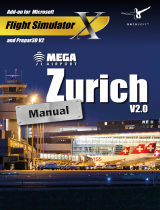 Sim-Wings Mega Airport Zurich v2.0 Bedienungsanleitung
Sim-Wings Mega Airport Zurich v2.0 Bedienungsanleitung
-
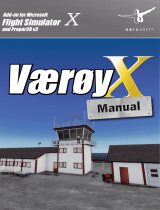 Sim-Wings Værøy X Benutzerhandbuch
Sim-Wings Værøy X Benutzerhandbuch
-
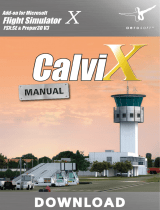 Sim-Wings Calvi X Benutzerhandbuch
Sim-Wings Calvi X Benutzerhandbuch
-
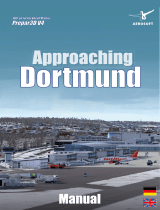 Sim-Wings Approaching Dortmund Benutzerhandbuch
Sim-Wings Approaching Dortmund Benutzerhandbuch
-
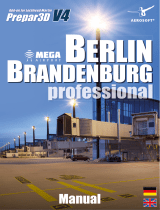 Sim-Wings Mega Airport Berlin Brandenburg Professional Benutzerhandbuch
Sim-Wings Mega Airport Berlin Brandenburg Professional Benutzerhandbuch
-
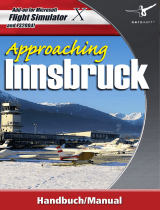 Sim-Wings Approaching Innsbruck 2 Benutzerhandbuch
Sim-Wings Approaching Innsbruck 2 Benutzerhandbuch
-
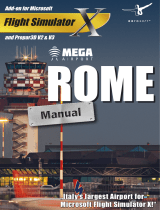 Sim-Wings Mega Airport Rome Bedienungsanleitung
Sim-Wings Mega Airport Rome Bedienungsanleitung
-
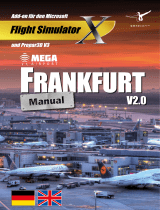 Sim-Wings Mega Airport Frankfurt v2.0 Flight Simulator X Prepar3D Benutzerhandbuch
Sim-Wings Mega Airport Frankfurt v2.0 Flight Simulator X Prepar3D Benutzerhandbuch
-
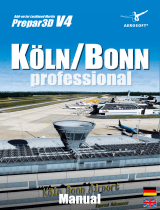 Sim-Wings Köln Bonn Professional Benutzerhandbuch
Sim-Wings Köln Bonn Professional Benutzerhandbuch
-
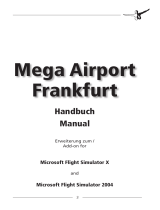 Sim-Wings Mega Airport Frankfurt Flight Simulator 2004 Flight Simulator X Benutzerhandbuch
Sim-Wings Mega Airport Frankfurt Flight Simulator 2004 Flight Simulator X Benutzerhandbuch



















